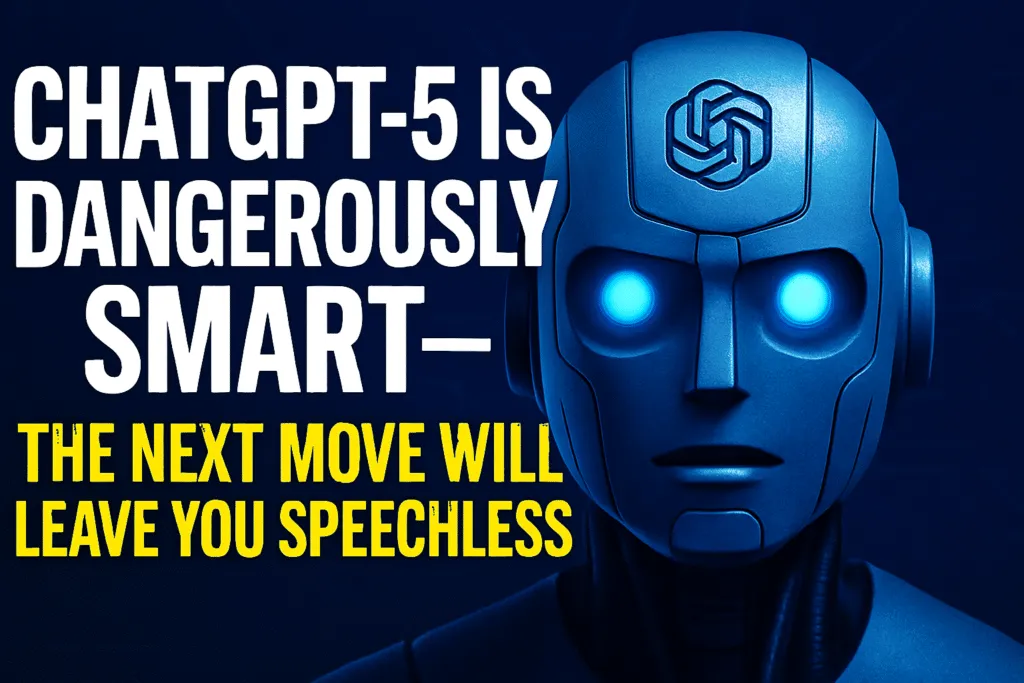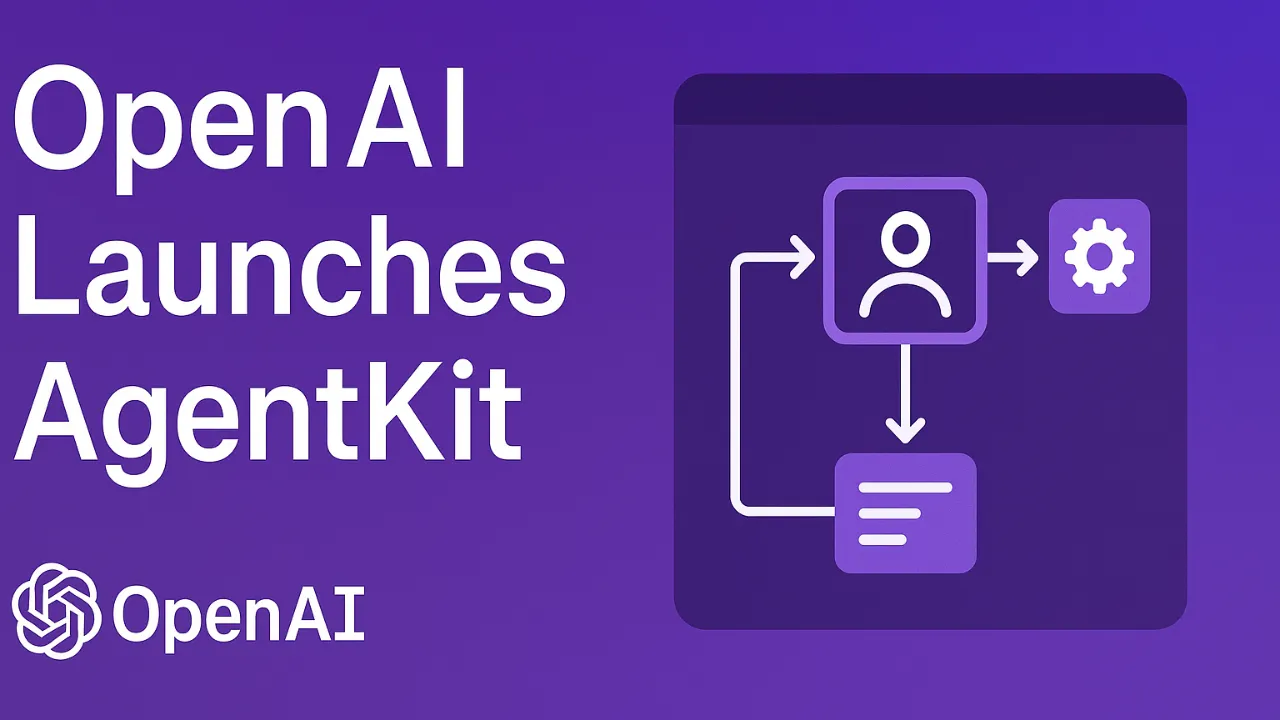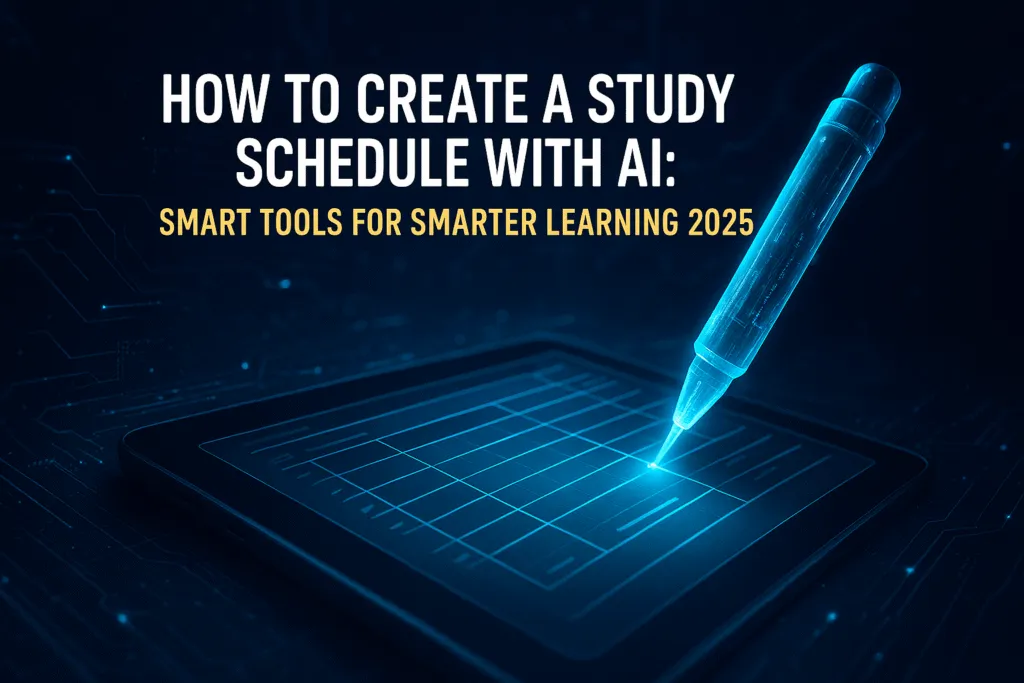Introduction – The Leap from GPT-4 to GPT-5
ChatGPT-5 marks a significant leap in artificial intelligence, taking everything we thought we knew about AI to a whole new level. Compared to its predecessor GPT-4, the advancements are not just about generating more accurate text but about demonstrating reasoning, problem-solving, and creativity that feel strikingly human. This rapid evolution has left both tech enthusiasts and industry experts amazed at how quickly AI is approaching capabilities we once believed were decades away. The jump from GPT-4 to ChatGPT-5 is more than an incremental update; it is a redefinition of what an AI language model can achieve. With refined training data, improved context handling, and an enhanced ability to understand nuance, it can now hold conversations that feel natural and insightful, solve complex problems in seconds, and even create content that rivals professional work. For bloggers, developers, and businesses, this means access to a tool that can generate ideas, write persuasive copy, debug code, or simulate realistic scenarios with incredible accuracy. What makes ChatGPT-5 even more impressive is its adaptability. It can switch between casual conversation and technical explanations seamlessly, understanding the intent behind the words rather than just the literal meaning. This makes interactions smoother and far more productive. The leap is also visible in how well it retains context over long conversations, something that was a limitation in previous versions. For anyone following AI trends, the launch of ChatGPT-5 is a milestone worth noting. It signals that the age of truly intelligent virtual assistants is no longer a futuristic dream but an unfolding reality. As technology continues to evolve at this pace, it’s clear that ChatGPT-5 is not just a smarter AI—it is a glimpse into the next era of human-computer interaction, one that could reshape industries and redefine productivity.
How GPT-5 Achieved Unprecedented Intelligence
ChatGPT-5 has reached a level of intelligence that feels like a turning point in the history of AI. Its remarkable capabilities are the result of several groundbreaking improvements in architecture, training methodology, and data refinement. Unlike previous versions, which relied heavily on vast datasets for pattern recognition, ChatGPT-5 combines deep contextual understanding with advanced reasoning skills, allowing it to interpret meaning far beyond the surface of words. Engineers have fine-tuned its neural network to process and connect concepts in ways that resemble human thought processes. This means ChatGPT-5 can analyze a situation, consider multiple perspectives, and generate responses that are not just relevant but also insightful. Another key factor behind its unprecedented intelligence is the scale and diversity of the training data. The model has been exposed to an even wider range of languages, cultural contexts, and specialized knowledge, making it far more versatile in handling different domains. At the same time, its algorithms have been optimized to filter noise from valuable information, ensuring accuracy and reducing hallucinations. Additionally, ChatGPT-5 benefits from enhanced long-term memory capabilities, enabling it to maintain context over extended interactions and recall past conversation threads with impressive precision. This makes its answers feel more coherent and connected, even in complex discussions. The integration of reinforcement learning from human feedback has also played a major role, allowing the system to learn not just from data but from real-world interactions and user preferences. These combined advancements make ChatGPT-5 more than just a text generator—it is now capable of critical thinking, creative problem-solving, and adapting to user needs in real time. With such intelligence, ChatGPT-5 is not only setting new benchmarks for AI performance but also raising important questions about the boundaries between human and machine capabilities.
Real-World Skills That Make GPT-5 Stand Out
ChatGPT-5 is not just a technological upgrade; it is a tool with real-world skills that can transform how people work, learn, and create. One of its most notable strengths is its ability to understand and respond with human-like fluency. Whether it’s writing an article, drafting a business proposal, or engaging in casual conversation, ChatGPT-5 delivers content that feels authentic and relevant. This makes it a valuable assistant for professionals in fields like journalism, marketing, education, and software development. Another standout skill is its advanced problem-solving capability. ChatGPT-5 can break down complex problems into manageable steps, offer logical solutions, and adapt its approach based on feedback. From debugging lines of code to providing step-by-step explanations for technical concepts, it operates like an expert consultant available on demand. Creativity is another area where ChatGPT-5 shines. It can generate innovative ideas for campaigns, storylines, and designs, often blending logic with imagination in ways that surprise even experienced creators. Its multilingual abilities have also improved significantly, allowing it to communicate seamlessly across different languages, which is particularly beneficial for global businesses. Furthermore, ChatGPT-5 excels at contextual memory, remembering details from earlier in the conversation to keep discussions consistent and coherent. This makes long-term collaboration possible without constantly repeating information. It also adapts its tone and style based on the user’s needs, switching effortlessly between formal reports, casual dialogue, or instructional content. Perhaps most importantly, ChatGPT-5 integrates all these skills in real time, making it a dynamic partner rather than just a passive tool. These capabilities position it as more than just an AI model—it’s a versatile digital assistant that can enhance productivity, spark creativity, and support decision-making across countless real-world scenarios.
Shocking Use Cases Nobody Saw Coming
When ChatGPT-5 was launched, most people expected it to handle writing, coding, and research better than previous versions. What few anticipated were the surprising and unconventional ways it would be applied across industries and daily life. One shocking use case is its role in high-stakes negotiations, where it can analyze data, anticipate counterarguments, and draft persuasive responses faster than a human team. Some businesses are even using ChatGPT-5 as a real-time strategist during live meetings, giving executives instant insights while discussions are ongoing.
Another unexpected application is in scientific discovery. Researchers have reported that ChatGPT-5 can review vast amounts of academic literature, identify overlooked patterns, and even suggest new hypotheses for experiments. In one instance, it provided a novel approach to a medical research problem that saved weeks of work.
The entertainment industry has also found surprising uses. Filmmakers and game developers are employing ChatGPT-5 to generate dynamic scripts, character dialogues, and immersive world-building details that adapt based on audience feedback. Musicians have even used it to co-compose songs, blending human creativity with AI precision in real time.
In education, some teachers are leveraging ChatGPT-5 to create personalized learning paths for students, adjusting lessons to match each learner’s pace and style. This has opened the door to more inclusive and effective teaching methods that would be difficult to achieve manually.
Perhaps the most unexpected use cases come from everyday individuals. From planning intricate travel itineraries that factor in personal tastes to generating legally sound contracts for small businesses, ChatGPT-5 is proving it can handle tasks far beyond casual conversation. These real-world examples highlight how this AI is not just evolving—it’s finding roles we never imagined, and in many cases, doing them exceptionally well.
The Line Between Human and AI Thinking
With the arrival of ChatGPT-5, the gap between human and AI thinking has become narrower than ever before. While earlier AI models could mimic conversation patterns, ChatGPT-5 processes information with a depth and nuance that often feels indistinguishable from human reasoning. It doesn’t just respond to questions—it interprets tone, context, and intent, allowing it to craft answers that resonate emotionally as well as logically. This has sparked debates about whether we’re interacting with mere algorithms or something approaching cognitive understanding.
One key factor is its ability to form connections between seemingly unrelated ideas. Much like human creativity, ChatGPT-5 can combine knowledge from different fields to produce unique insights, whether that’s applying principles from psychology to marketing or blending historical events with modern trends for storytelling. Its long-term context handling makes conversations flow naturally, almost like speaking with someone who remembers your preferences, past discussions, and even subtle hints in your phrasing.
However, there’s still a crucial difference—human thinking is shaped by personal experiences, emotions, and subjective perspectives, while ChatGPT-5 operates within the boundaries of its training and programming. It doesn’t truly feel or hold beliefs, but it can convincingly simulate them when needed. This fine line can be both fascinating and concerning, as it challenges our ability to distinguish authentic human judgment from advanced machine output.
The blending of human-like reasoning with machine efficiency raises important questions about trust, authenticity, and the ethical use of AI. As ChatGPT-5 continues to evolve, understanding where human thought ends and AI simulation begins will be essential—not just for technology experts, but for anyone navigating this new era of human-AI collaboration.
The Dark Side: Potential Risks & Threats
While ChatGPT-5 offers groundbreaking advancements, it also brings serious risks that cannot be ignored. One of the most pressing concerns is the potential for misinformation at an unprecedented scale. With its ability to produce convincing, human-like content instantly, ChatGPT-5 could be misused to generate fake news, deepfake scripts, or manipulative propaganda that’s nearly impossible for the average person to detect. This poses a significant threat to public trust and information integrity.
Another major risk lies in dependency. As people increasingly rely on ChatGPT-5 for decision-making, problem-solving, and creative work, there’s a danger of over-reliance on AI judgment without critical human oversight. This could lead to situations where flawed or biased outputs go unquestioned, potentially resulting in harmful consequences in fields like healthcare, law, or finance.
Privacy and data security also remain critical concerns. If exploited, ChatGPT-5 could be used to extract personal details through subtle questioning or generate phishing attacks tailored to individual targets with alarming precision. In the wrong hands, its adaptability becomes a tool for sophisticated cybercrime.
There’s also the ethical question of job displacement. With its advanced skills in writing, coding, analysis, and customer service, ChatGPT-5 could replace entire categories of work, disrupting economies and leaving many without viable alternatives.
Finally, the blurring of human and AI thinking raises concerns about manipulation and trust. If people cannot tell whether they are interacting with a human or ChatGPT-5, it opens the door to exploitation in relationships, negotiations, and online interactions. While the technology is undeniably powerful, the risks it carries mean that responsible use, regulation, and transparency must develop alongside its capabilities. Without proper safeguards, the dark side of ChatGPT-5 could overshadow its potential benefits.
Mind-Blowing Experiments with GPT-5
Since its release, ChatGPT-5 has been at the center of experiments that reveal just how powerful and versatile it has become. Researchers, developers, and curious individuals have pushed it beyond traditional use cases, often with results that feel almost science fiction. One fascinating experiment involved giving ChatGPT-5 access to a simulated robotics environment. Without prior coding for specific tasks, it was able to learn how to operate robotic arms, assemble components, and even optimize movements for efficiency—all through natural language instructions.
In another groundbreaking test, scientists tasked ChatGPT-5 with creating original scientific hypotheses in fields like climate change and biomedical research. Not only did it suggest viable theories, but some were so innovative that researchers began considering them for real-world testing. This level of creative problem-solving from an AI stunned the scientific community.
Artists and creators have also run mind-bending trials. By feeding ChatGPT-5 prompts connected to visual AI models, they generated entire multimedia projects—scripts, soundtracks, and visuals—crafted in harmony as if produced by a single creative mind. Some indie filmmakers have even completed short films where nearly every element originated from AI guidance.
Perhaps one of the most unexpected experiments came from educators. In controlled studies, ChatGPT-5 acted as a fully adaptive tutor, changing its teaching style in real time based on the student’s engagement level, tone, and comprehension speed. This personalization was so effective that it outperformed traditional one-size-fits-all teaching methods.
These experiments highlight that ChatGPT-5 is more than a conversational tool—it’s a flexible, adaptive intelligence capable of innovating in ways that challenge how we define technology’s role in creativity, science, and problem-solving. With each new test, it becomes clearer that we’ve only begun to scratch the surface of what this AI can achieve.
Industries on the Verge of Transformation
The arrival of ChatGPT-5 is sparking a wave of change across industries, with some sectors on the brink of complete transformation. In customer service, businesses are replacing traditional chatbots with ChatGPT-5-powered systems capable of handling complex queries, understanding emotions, and resolving issues without human intervention. This not only improves response times but also delivers personalized experiences that customers find more satisfying.
In healthcare, ChatGPT-5 is assisting doctors by summarizing patient histories, suggesting possible diagnoses, and even helping with treatment plans based on the latest medical research. While it’s not a replacement for human expertise, it significantly reduces the time spent on administrative tasks, allowing medical professionals to focus more on patient care.
The education sector is also experiencing a major shift. Adaptive learning platforms using ChatGPT-5 can create individualized lesson plans, answer student questions in real time, and adjust teaching styles based on performance, making learning more engaging and effective.
In the legal field, firms are leveraging ChatGPT-5 to draft contracts, analyze case law, and prepare legal arguments at speeds that were previously unimaginable. This allows lawyers to focus on strategy while AI handles the heavy research work.
Even creative industries like marketing, film, and game development are evolving. ChatGPT-5 can brainstorm campaigns, write scripts, and develop immersive narratives that feel authentically human. In finance, it’s being used for risk assessment, fraud detection, and market predictions with higher accuracy due to its ability to process massive datasets quickly.
These transformations show that ChatGPT-5 isn’t just a technological milestone—it’s a disruptive force reshaping how industries operate. As adoption continues, the businesses that learn to integrate it effectively will likely lead in productivity, innovation, and customer satisfaction in the years ahead.
AI Ethics – Can We Control What We’ve Created?
The rise of ChatGPT-5 has reignited one of the most important debates in modern technology: whether we can truly control the AI systems we’ve built. With capabilities that now include advanced reasoning, contextual understanding, and creative problem-solving, ChatGPT-5 operates at a level where its outputs can influence decisions, shape opinions, and impact real-world outcomes. This power brings with it serious ethical responsibilities.
One of the main concerns is alignment—ensuring that ChatGPT-5’s goals and behavior remain consistent with human values. While developers have implemented safety protocols, no system is entirely free from bias or error. When an AI can generate highly persuasive content or execute complex tasks autonomously, even small inaccuracies or hidden biases can have far-reaching consequences.
Transparency is another critical factor. Many users have no idea how ChatGPT-5 processes information or why it gives certain answers. Without clear explanations, trust in AI could erode, especially in sensitive fields like healthcare, law, and journalism.
Then there’s the challenge of accountability. If ChatGPT-5 is involved in making a mistake—whether it’s a financial miscalculation, a faulty legal recommendation, or spreading misinformation—who is responsible? The creator? The user? Or the AI itself? These questions have no easy answers, yet they are essential to address before adoption becomes universal.
Ultimately, controlling what we’ve created means building AI governance systems as advanced as the AI itself. This includes rigorous testing, ethical guidelines, continuous monitoring, and global collaboration to ensure AI development benefits humanity as a whole. ChatGPT-5 is proof that we can achieve remarkable technological feats—but it’s also a reminder that progress without safeguards could lead us into uncharted, and potentially dangerous, territory.
What This Means for the Future of Work
The arrival of ChatGPT-5 is poised to reshape the future of work in ways that are both exciting and challenging. With its ability to perform tasks that once required highly skilled human labor, it is redefining what roles exist, how they function, and who—or what—will perform them. Repetitive, time-consuming tasks like data entry, report generation, and initial customer support are increasingly being automated, freeing human workers to focus on strategy, creativity, and complex decision-making.
For many professionals, ChatGPT-5 will act as an ever-present assistant. Marketers can use it to brainstorm campaign ideas, analysts can rely on it to sift through massive datasets, and developers can have it debug code or suggest optimizations in real time. This means less time spent on groundwork and more time dedicated to innovation.
However, the same capabilities that make ChatGPT-5 a powerful ally also raise concerns about job displacement. Roles that involve predictable, rule-based tasks are at the highest risk of automation. This shift will require workers to adapt by learning skills that AI cannot easily replicate—such as emotional intelligence, leadership, and critical thinking.
The future workplace is likely to become a blend of human creativity and AI precision, where collaboration between the two becomes the norm. Companies that embrace this partnership will benefit from increased productivity, faster innovation cycles, and more personalized services. At the same time, organizations must invest in upskilling their workforce to ensure employees remain valuable contributors in this AI-driven environment.
In essence, ChatGPT-5 signals a turning point in the evolution of work. It’s not about replacing humans, but about transforming roles and opening new opportunities—while challenging us to adapt to a future where human and AI strengths complement each other.
Could GPT-5 Change Human Creativity Forever?
ChatGPT-5 is already challenging the traditional boundaries of creativity, prompting an important question—are we entering an era where human imagination will be forever transformed by AI collaboration? With its ability to generate compelling stories, compose music, design visual concepts, and even suggest entirely new artistic styles, ChatGPT-5 is no longer just assisting creators; it is becoming a creative partner in its own right.
One of the most remarkable aspects of ChatGPT-5’s creative potential is its ability to blend logic and imagination. It can merge references from literature, art, science, and history to produce ideas that might take a human weeks to conceptualize. For example, an author could provide a single sentence, and ChatGPT-5 could expand it into an intricate plotline with multidimensional characters. A designer could describe a mood, and the AI could produce detailed concepts ready for visual execution.
This level of assistance could dramatically speed up the creative process, allowing artists and innovators to explore more possibilities in less time. It also lowers the barrier to entry for people who have ideas but lack certain technical skills—meaning more voices and visions could enter creative spaces.
However, this raises a deeper philosophical question: if AI plays a major role in creating something, is it still purely human art? While ChatGPT-5 cannot feel emotions or personal inspiration, its outputs can evoke them in powerful ways, blurring the line between human expression and machine-generated work.
In the long run, GPT-5 may not replace human creativity but rather redefine it. Instead of being a solitary pursuit, creation could become a collaborative process where human intuition and AI ingenuity work hand-in-hand, unlocking forms of art and innovation we’ve never experienced before.
Predictions for GPT-6 and Beyond
With the release of ChatGPT-5 already pushing AI capabilities into unprecedented territory, it’s natural to wonder what GPT-6 and future generations might bring. If the current pace of development continues, GPT-6 could be an even more adaptive, context-aware, and specialized AI system—one capable of handling not just text-based interactions, but multimodal inputs and outputs with flawless integration. This means it might process voice, images, video, and real-time sensory data seamlessly within a single conversation.
A likely advancement will be a deeper understanding of real-world environments. GPT-6 could integrate with live data streams, IoT devices, and augmented reality systems, enabling it to provide advice, instructions, and solutions based on actual surroundings. Imagine an AI that can watch a live camera feed of a construction site and guide workers step-by-step in real time, or help a chef adjust a recipe based on what it sees in the kitchen.
We may also see significant improvements in personalization. GPT-6 could learn and adapt over months or years, building a detailed profile of individual user preferences, goals, and communication styles—while maintaining strict privacy controls. This could make interactions feel more like working with a long-term partner than a generic assistant.
Ethics and governance will likely be a major focus as well. Future versions might include built-in systems to detect potential misuse, verify factual accuracy instantly, and maintain transparency about how outputs are generated.
Beyond GPT-6, the horizon hints at AI models that could collaborate with other AI systems as fluidly as humans work in teams, combining different specialties for complex problem-solving. While this is exciting, it also underscores the importance of building the right safeguards now—because each leap forward will bring not only greater possibilities, but also greater responsibilities.
Conclusion – Is the World Ready?
The incredible advancements seen in ChatGPT-5 signal a new chapter in artificial intelligence—one where machines don’t just follow instructions but think, create, and collaborate in ways once thought impossible. This transformation promises to unlock tremendous benefits across industries, boost productivity, and open new avenues for innovation. Yet, with these breakthroughs come serious challenges, including ethical dilemmas, risks of misuse, and concerns about the future of work.
As we stand at this crossroads, the question isn’t just about what ChatGPT-5 can do, but whether society is prepared to handle its impact responsibly. Governments, businesses, and individuals must work together to develop guidelines, regulations, and educational initiatives that ensure AI enhances human life without undermining trust or safety.
Embracing ChatGPT-5’s potential requires a balanced approach—one that celebrates its strengths while vigilantly managing its risks. The future depends not only on advancing technology but on our collective wisdom to use it wisely. Whether the world is ready or not, the AI revolution is here, and how we respond will shape the next era of human progress.
Also Read: The Death of Coding 2025: Will AI Make Developers Obsolete?.
FAQs
1. What is ChatGPT-5?
ChatGPT-5 is the latest generation of AI language models developed to understand and generate human-like text with improved reasoning, creativity, and context awareness compared to earlier versions.
2. How is ChatGPT-5 different from GPT-4?
Unlike GPT-4, ChatGPT-5 offers deeper contextual understanding, better long-term memory, advanced problem-solving skills, and the ability to adapt its responses to various tones and user needs more effectively.
3. Can ChatGPT-5 replace human jobs?
While ChatGPT-5 can automate many repetitive and technical tasks, it is best seen as a tool that enhances human work. However, some roles involving routine work may face disruption, making upskilling and adaptation essential.
4. Is ChatGPT-5 safe to use?
Developers have implemented safety measures and ethical guidelines, but users should remain cautious. Potential risks include misinformation, bias, and privacy concerns, so responsible use and oversight are important.
5. How can businesses benefit from ChatGPT-5?
Businesses can leverage ChatGPT-5 for customer service, content creation, data analysis, and strategic planning, improving efficiency and innovation across multiple sectors.
6. Will future versions like GPT-6 be even smarter?
Yes, future models are expected to integrate multimodal data, enhance personalization, and offer better ethical safeguards, further blurring the line between human and machine intelligence.
7. How does ChatGPT-5 impact creativity?
ChatGPT-5 acts as a creative partner, generating ideas and content that can inspire human creators, speeding up workflows and enabling new forms of artistic expression.
8. What ethical challenges does ChatGPT-5 present?
Challenges include bias in outputs, accountability for AI decisions, transparency of AI processes, and preventing misuse in spreading false information or manipulating opinions.













